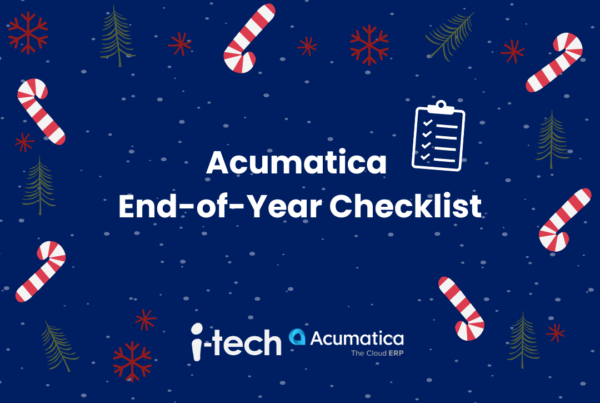Whether you are a student or starting a business, accounting can be intimidating. The most intimidating part of accounting is some of the words involved. Although it is simple once you know these terms, it can be very tricky when you are first starting out.
When you walk into your accountant’s office, you want to know what you are talking about. Alternatively, if you plan to purchase accounting software, knowing the terms will allow you to focus less on being confused and more on actually processing your accounting.
We at i-Tech have outlined a few of the most common accounting terms and definitions that you should know. In hopes that you will be able to tackle your own accounting this year, try to glide through the below glossary for beginners and get an idea before you begin.
Accounting Terms & Definitions
Accounts Receivable
The accounts receivable definition is quite simple. When there is money owed by a customer or client to a business, then the account receivable is that money that is owed. Often it is in response to goods or services that have been provided.
Accounts Payable
The accounts payable definition is in regards to a process of reporting financial transactions. It may also include recording those transactions.
Assets
There are two types of assets, fixed and current. Current assets are assets that will be converted into cash within one year. This can be physical cash or inventory, but it can also be accounts receivable (invoices).
Alternatively, fixed assets are more of a long-term commitment. These assets will benefit a company or business for longer than one year. Oftentimes, fixed assets are real estate, expensive equipment or pieces of land.
Liabilities
There are two types of liabilities, current and long-term. All liabilities are debts that a business owes due to operation. Similar to assets, current liabilities are debts that will be paid within a one-year period. This might be paying suppliers for goods. Long-term liabilities might be a mortgage or a lean. These are payable over many years.
Expenses
Expenses are simply costs that a business must pay. There are four types of expenses: fixed, variable, accrued or day-to-day.
- Fixed expenses are payments that are regularly scheduled. This might include rent or a car payment for a business vehicle.
- Variable expenses are costs that change throughout the year. This might include labor costs, which can change depending on the season or need.
- Accrued expenses have not been paid yet. These do have the chance to build up, so it is important to pay them off in a timely manner.
- Operation expenses occur due to any payment that is not related to the production of goods or services. This might include marketing, taxes or insurance.
Balance Sheet
Having a balance sheet allows you to have a full financial report. This will show what your company owns, what your company owes, and any equity owned by different individuals in the company.
Cash Flow
Any revenue that is generated through either manufacturing or sales is cash flow.
COGS
Standing for “Cost of Goods Sold,” COGS are the direct expenses that occur due to producing goods in a business. There are different formulas for each business but it includes everything that is included to make a product, including materials and labor cost.
Enterprise Resource Planning
The enterprise resource planning definition is sometimes referred to as ERP. ERP is software that is used to integrate the different business processes required in the management of a company such as accounting, sourcing, project management, risk management, compliance and supply chain operations.
CRM
CRM is an acronym for customer relationship management, and it is a software used to manage interactions with customers. It includes all past and present interactions and allows a business to analyze those interactions to facilitate more efficient business practices.
Payroll Software
Payroll software is used to manage, organize and automate payments to employees. It allows you to track and maintain all payment records, making taxes simple and providing less margin for error.
Cost Accounting
In order to understand what the total cost of operations is in a business, cost accounting is used. It also aids in creating a budget and increasing overall profit.
Cloud Accounting
Always used as software, cloud accounting is hosted on a remote server and accessible from anywhere. It allows businesses to send accounting information to a cloud where it is then processed and sent back to the user.
General Ledger
The general ledger is basically a full record of all the transactions that have ever occurred in a business or company.
Return on Investment
Also known as ROI, return on investment is the ratio between the net profit of a company and what the total cost of investment was. Typically, a company looks to have a high ROI so that the company will be keeping a higher profit.
Inventory
All of the raw materials, finished goods, and any other goods that are currently being worked on or manufactured make up the inventory.
P&L statement
Known as a profit and loss statement, a P&L statement is synonymous with an income statement. This is a financial document stating all income, as well as expenses, during a certain time (usually a year). This statement will be able to show your progression as well as losses.
Contact i-Tech Today
Accounting is difficult, especially when you are responsible for an entire company. Knowing the terms can help but so can the proper accounting software. Accounting software can help navigate the sea of documents and numbers that need to be tracked.
We at i-Tech offer accounting software that will help improve your processes with much less hassle. As a certified partner of Acumatica Accounting Software, our experts are highly trained to get you the results you are looking for. To learn more about Acumatica accounting software and how it can help scale your business, contact us today!








